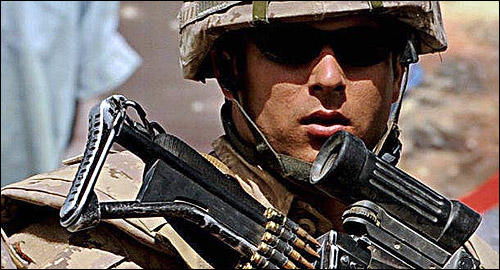
That title is taken directly from our Conservative government’s curious website about the “engagement in Afghanistan” — and yes, that’s the way it’s actually described. We’re not involved in a “war” apparently, but a conflict that’s been bureaucratically deemed an “engagement” of some kind.
According to the various benchmarks set out by the Harper government, it’s reported that the number of Afghan National Army battalions in Kandahar capable of conducting “near-autonomous security operations” has increased since our involvement. After eight years of our so-called “engagement” — at a cost of $18 billion or more, it should be added — it’s now claimed that the Afghan Army’s brigade HQ and 20% of its forces are capable of undertaking “near-autonomous perations [sic].” Evidently, results of Canadian efforts in that country are now such that less than half of the five Afghan Army battalions have an “effective strength of more than 70%.” Think about that statistic being reported as a measure of success…
The website goes on to state that “Three infrastructure projects for Sarpoza Prison” have been completed, including reinforcing the main gate. This is the same facility where it’s alleged that detainees were brutally tortured by their Afghan captors in the past and last year militant insurgents drove a car filled with explosives up to the aforementioned gate, blew it up, killed 10 police officers in the area and freed all of the prisoners. But we’ve now rebuilt the gate and cleverly branded it an “infrastructure project”… Yay!
Various non-security related achievements are also highlighted on the website such as the construction of three schools (a few dozen others are in the works, apparently) and providing “vocational training” for almost 500 Afghans. Not much to show for a population of 28 million some might argue, but hey, almost 9,000 women across the nation have received what’s called “literacy training” and nearly 200 people have been employed to build (or re-build) roads and bridges in the Kandahar area. Some judges have also been sent on a crash-course to bone up on western-style jurisprudence. And our forces have been used to improve irrigation canals and help build “energy and protection walls” — whatever those might be.
There are many more such indicators of “progress” if you care to investigate; from the expansion of a regional hospital’s obstetric and gynecological services to our sponsorship of a secretariat charged with facilitating a “Peace Jirga” between Afghanistan and Pakistan to discuss contentious border issues.
Doubtless these are all noble and worthy projects, but do they actually require our continued military presence in Afghanistan?


